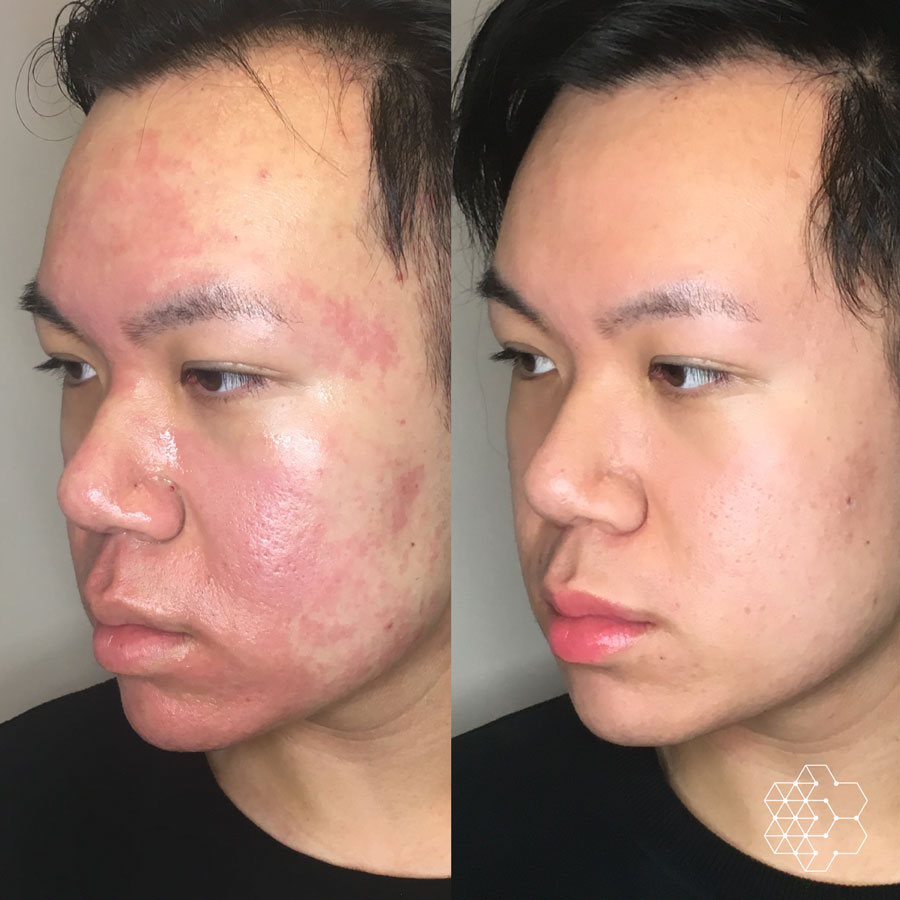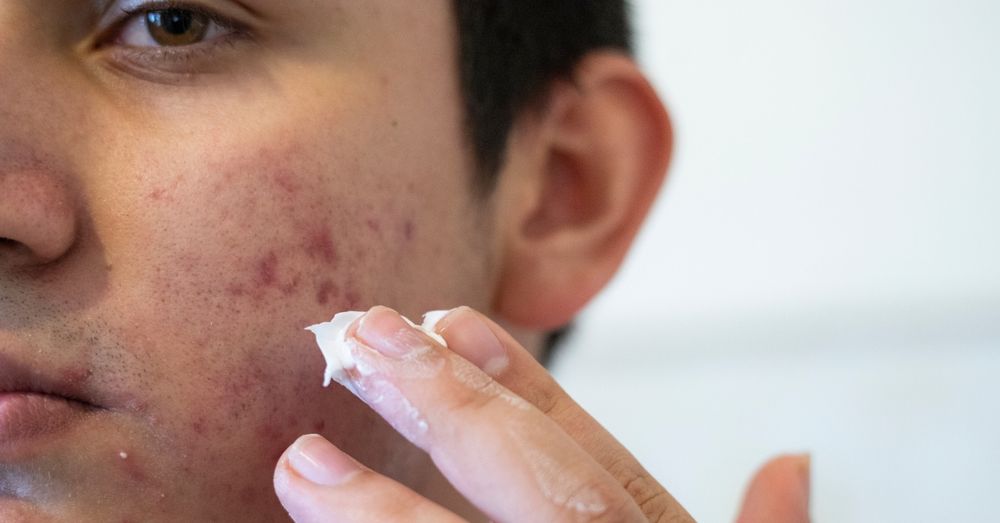Best Acne Scars Treatment: Advanced Techniques for Easier Skin
Best Acne Scars Treatment: Advanced Techniques for Easier Skin
Blog Article
Exploring Skin Disease: Treating and recognizing Acne Scars for Healthier Skin
Acne marks represent a significant concern for individuals seeking to preserve healthy and balanced skin, as they can influence both appearance and self-confidence. Comprehending the different kinds of scars, from atrophic to hypertrophic, is important for establishing proper therapy choices.
Comprehending Acne Marks

The body's all-natural recovery process can lead to either atrophic marks, which show up as clinical depressions in the skin, or hypertrophic scars, which are elevated and result from overproduction of collagen. In addition, the mental toll of acne marks must not be ignored; several people report feelings of embarrassment, stress and anxiety, and reduced self-confidence. This emotional problem can impact social communications and total lifestyle.
Attending to acne scars requires a comprehensive understanding of their formation and impact. Awareness of the potential for lasting consequences connected with without treatment scars can inspire people to seek ideal treatments. Early intervention and efficient administration approaches can significantly enhance skin look and improve emotional durability, stressing the relevance of understanding the complexities surrounding acne marks.
Kinds of Acne Marks
Acne scars can be categorized into distinctive kinds, each exhibiting distinct characteristics and needing details treatment approaches. acne scars. The key sorts of acne scars include atrophic, hypertrophic, and keloid marks

Hypertrophic marks, in contrast, are elevated over the skin degree and are the outcome of excessive collagen production throughout the recovery process. They normally remain within the limits of the initial acne sore. Keloid scars are similar but extend past the original injury site, developing larger, increased areas that can be excruciating or itchy.
Recognizing these types of scars is important for picking proper treatment choices. Different scars might react far better to certain treatments, such as laser treatments, fillers, or surgical treatments, stressing the value of a tailored method to acne scar monitoring.
Determining Your Marks
When examining the appearance of your skin, it is essential to properly identify the sort of marks existing, as this will notify one of the most reliable treatment method. Acne marks typically fall under two groups: atrophic and hypertrophic marks. Atrophic marks, which are one of the most usual, look like anxieties or imprints on the skin. These can additionally be categorized into ice-pick scars, boxcar scars, and rolling scars, each showing unique qualities and calling for different approaches for analysis.
Hypertrophic marks, on the other hand, are elevated and happen due to too much collagen manufacturing during the recovery process. Acknowledging the details features of your scars-- such as texture, size, and deepness-- is necessary for appropriate recognition (skin rejuvenation treatments). Furthermore, consider the circulation of marks throughout your skin, as this can suggest the intensity and period of the acne problem
Involving with a skin specialist can provide beneficial insights into the nature of your scars, aiding in the differentiation in between various kinds. A comprehensive understanding of your scars will eventually lead to a more tailored and reliable therapy strategy, guaranteeing a more clear and healthier complexion.
Therapy Alternatives Offered
Identifying the specific kind of acne scars present on your skin prepares for checking out efficient therapy choices. Usual sorts of acne scars consist of atrophic (depressed), hypertrophic (increased), and post-inflammatory erythema.
For atrophic marks, choices such as chemical peels, microneedling, and laser resurfacing are widely utilized. Chemical peels off use acids to get rid of the external layer of skin, advertising new cell growth. Microneedling involves tiny needles that create micro-injuries, boosting collagen production. Laser resurfacing targets harmed skin cells, improving texture and tone.
Hypertrophic scars can be treated with corticosteroid injections to flatten the mark or laser therapy to lower inflammation and enhance appearance. Silicone gel sheets and stress dressings might also aid in taking care of increased marks.
Furthermore, facial fillers can momentarily complete depressions from atrophic marks, while surgical excision might be proper for serious instances. Each therapy option has its factors to consider and advantages, making it essential to seek advice from with a skin specialist. They can give personalized recommendations based upon the type and severity of your marks, in addition to your skin type and total wellness.
Tips for Prevention
Reliable avoidance methods can considerably minimize the probability of developing acne marks. The very first step is to preserve a regular skincare routine that includes mild cleaning, exfoliation, and moisturizing. Using non-comedogenic items assists stop clogged pores, which can worsen acne. In addition, incorporating topical therapies consisting of salicylic acid or benzoyl peroxide can successfully take care of breakouts and lessen check inflammation.
Avoiding the urge to pop or select acne sores is crucial, as this can lead to much deeper skin damages and boost the risk of scarring. Instead, take into consideration making use of a cold compress or over the counter treatments to decrease swelling and soreness.
Sun defense is another essential element of avoidance; ultraviolet (UV) rays can dim scars and impede the healing process. Applying a broad-spectrum sunscreen with at the very least SPF 30 daily can protect the skin and promote also recovery.
Finally, maintaining a balanced diet regimen abundant in vitamins, anti-oxidants, and minerals supports skin health and wellness and recovery. Staying hydrated and handling stress levels can also play a significant duty in lowering acne flare-ups. By implementing these approaches, individuals can substantially decrease their chances of developing acne scars.
Conclusion
To conclude, understanding and recognizing acne marks is essential for reliable therapy and attaining much healthier skin. Numerous types of acne marks, including hypertrophic and atrophic marks, require certain treatments customized to specific requirements. Therapy alternatives array from chemical peels and microneedling to corticosteroid injections, emphasizing the significance of getting in touch with a dermatologist. In addition, adopting a mild skin care routine and safeguarding the skin from UV exposure can considerably add to the avoidance of further scarring and total skin health.
The body's natural recovery process can result in either atrophic marks, which appear as anxieties in the skin, or hypertrophic marks, which are increased and result from overproduction of collagen. They are further split into three subtypes: click now ice pick marks, read this post here boxcar scars, and rolling marks. Acne marks typically fall into 2 classifications: atrophic and hypertrophic marks. These can further be identified into ice-pick marks, boxcar scars, and rolling scars, each displaying unique features and requiring various techniques for assessment.
Different types of acne scars, including atrophic and hypertrophic marks, necessitate specific interventions tailored to individual requirements.
Report this page